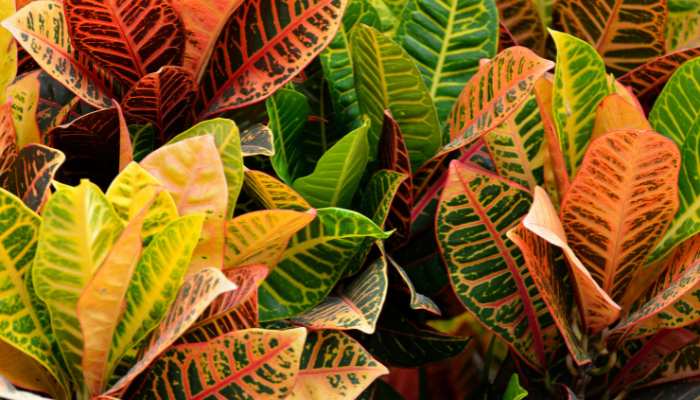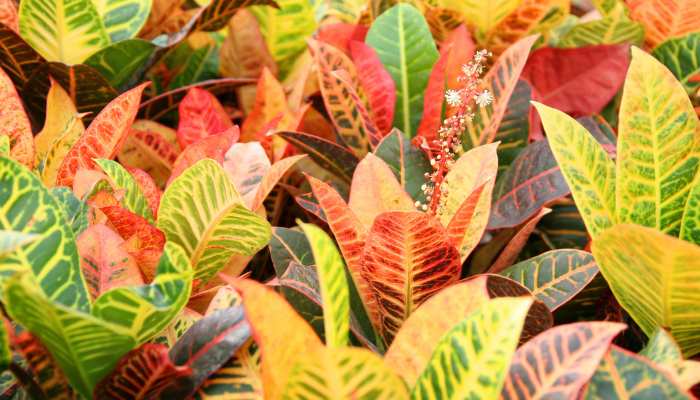If you are Looking for a Croton Plant Care Guide this article help you.
Welcome to the colorful world of Croton plants! Whether you’re a seasoned plant enthusiast or just starting your indoor gardening journey, this comprehensive guide will equip you with everything you need to know to care for these stunning botanical wonders.
Croton Plant Care Table of Contents
1. Introduction
Embark on a journey to transform your living space with the vibrant hues of croton plants! These tropical beauties are renowned for their stunning foliage, making them a popular choice for indoor gardens worldwide. In this guide, we’ll delve into the intricacies of croton plant care, ensuring that you can nurture these botanical marvels with confidence and success.
2. Understanding Croton Plants
Croton plants, scientifically known as Codiaeum variegatum, are native to the tropical regions of Southeast Asia and the Pacific Islands. With their glossy, multicolored leaves, crotons add a touch of exotic flair to any room. These plants thrive in warm, humid environments, making them ideal for indoor cultivation.

3. Light and Temperature Requirements
Light: Croton plants crave bright, indirect sunlight to flourish. Place them near a sunny window where they can bask in the gentle rays without being exposed to direct sunlight, which can scorch their delicate foliage.
Temperature: Maintain a consistent temperature between 60°F to 80°F (15°C to 27°C) for optimal growth. Avoid placing crotons near drafty areas or heating vents, as sudden temperature fluctuations can stress the plants.
4. Watering Needs
Water: Keep the soil consistently moist during the growing season, allowing the top inch of soil to dry out between waterings. Be cautious not to overwater, as excessive moisture can lead to root rot. During the dormant winter months, reduce watering frequency to prevent waterlogged soil.

5. Soil Requirements
Soil: Opt for well-draining, nutrient-rich soil to support healthy croton growth. A blend of peat moss, perlite, and compost works wonders for these plants, ensuring proper aeration and moisture retention.
6. Fertilizing Tips
Fertilizer: Feed your croton plants with a balanced liquid fertilizer every 2-4 weeks during the growing season (spring and summer). Dilute the fertilizer to half strength to prevent fertilizer burn, and cease fertilization during the winter months when growth slows down.
7. Pruning and Maintenance
Pruning: Regular pruning helps maintain the shape and vigor of your croton plants. Remove any leggy or damaged growth to encourage new growth and enhance the plant’s overall appearance. Use sharp, clean pruning shears to make precise cuts without injuring the plant.

8. Dealing with Pests and Diseases
Pests: Keep an eye out for common pests such as mealybugs, scale insects, and spider mites, which can plague croton plants. Treat infestations promptly with insecticidal soap or neem oil, ensuring thorough coverage of the affected areas.
Diseases: Croton plants are susceptible to fungal diseases such as leaf spots and powdery mildew, especially in humid conditions. Maintain good air circulation around the plants and avoid overhead watering to minimize the risk of disease.
Read More
9. Propagation Methods
Propagation: Expand your croton collection through propagation techniques such as stem cuttings and air layering. Choose healthy, mature stems for cutting, and place them in a well-draining rooting medium to encourage root development. With patience and care, you can propagate multiple plants from a single parent specimen.
10. Common Varieties to Explore
Varieties: Explore a myriad of croton cultivars, each boasting unique leaf shapes, colors, and patterns. From the vibrant hues of ‘Mammy’ to the striking variegation of ‘Petra,’ there’s a croton variety to suit every taste and preference.

11. Decorating with Croton Plants
Décor: Incorporate croton plants into your home décor to add a pop of color and texture to any space. Whether displayed in elegant ceramic pots or woven baskets, crotons make a stunning centerpiece or accent piece in living rooms, offices, and bedrooms alike.
12. Conclusion
With their dazzling foliage and easy-to-care-for nature, croton plants are sure to captivate plant enthusiasts of all levels. By following the tips and guidelines outlined in this guide, you can cultivate thriving croton specimens that enhance the beauty of your indoor environment.
Croton Plant Care Guide FAQs
1. Can croton plants tolerate low light conditions?
Croton plants thrive in bright, indirect sunlight and may struggle in low-light conditions. However, some varieties, such as ‘Gold Dust,’ exhibit greater tolerance to lower light levels.
2. How often should I repot my Croton plant?
Repot your Croton plant every 1-2 years or when it outgrows its current container. Select a slightly larger pot with ample drainage holes to accommodate the plant’s growing roots.
3. Why are the leaves of my Croton plant turning yellow?
Yellowing leaves on a croton plant may indicate various issues, including overwatering, insufficient light, or nutrient deficiencies. Assess the plant’s environmental conditions and adjust care accordingly to restore leaf health.
4. Are croton plants safe for pets?
Croton plants are toxic to cats, dogs, and other pets if ingested. Keep them out of reach of curious pets to prevent accidental ingestion, and seek veterinary assistance if ingestion occurs.
5. Can I place my croton plant outdoors during the summer months?
While croton plants thrive indoors, you can move them outdoors to a shaded area during the summer months to benefit from increased airflow and humidity. Avoid placing them in direct sunlight to prevent leaf scorching.

















1 thought on “Best Croton Plant Care Guide: Bringing Vibrancy to Your Home”